-
 Bitcoin
Bitcoin $93,552.1763
-0.23% -
 Ethereum
Ethereum $1,766.6931
-1.98% -
 Tether USDt
Tether USDt $1.0004
0.01% -
 XRP
XRP $2.1989
-1.25% -
 BNB
BNB $600.3676
-1.11% -
 Solana
Solana $151.2120
-0.25% -
 USDC
USDC $0.9999
0.01% -
 Dogecoin
Dogecoin $0.1807
0.74% -
 Cardano
Cardano $0.7184
2.59% -
 TRON
TRON $0.2455
-0.34% -
 Sui
Sui $3.3186
11.28% -
 Chainlink
Chainlink $14.9893
-0.57% -
 Avalanche
Avalanche $22.3158
-0.80% -
 Stellar
Stellar $0.2793
4.32% -
 UNUS SED LEO
UNUS SED LEO $9.2411
1.32% -
 Shiba Inu
Shiba Inu $0.0...01363
0.69% -
 Toncoin
Toncoin $3.1745
-0.42% -
 Hedera
Hedera $0.1878
3.95% -
 Bitcoin Cash
Bitcoin Cash $352.8657
-1.54% -
 Polkadot
Polkadot $4.2441
3.41% -
 Litecoin
Litecoin $84.2485
0.91% -
 Hyperliquid
Hyperliquid $18.6605
0.10% -
 Dai
Dai $1.0001
0.00% -
 Bitget Token
Bitget Token $4.4221
-2.10% -
 Ethena USDe
Ethena USDe $0.9996
0.01% -
 Pi
Pi $0.6540
-1.68% -
 Monero
Monero $227.1550
-1.36% -
 Pepe
Pepe $0.0...08734
-1.41% -
 Uniswap
Uniswap $5.8113
-4.55% -
 Aptos
Aptos $5.4832
1.80%
What is the difference between spot trading and futures trading on Binance?
Spot trading on Binance involves immediate purchase or sale of digital assets at the current market price, while futures trading involves contracts for buying or selling at a future date and price.
Feb 21, 2025 at 12:49 pm
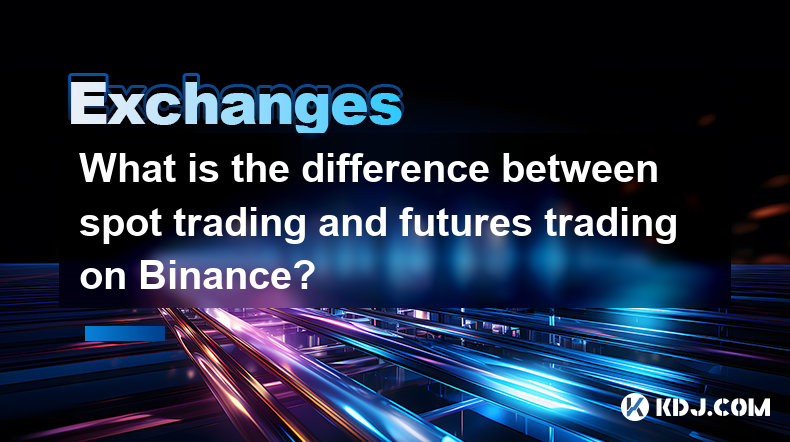
1. Definition
Spot Trading on Binance
Futures Trading on Binance
2. Trading Mechanism
Spot Trading Process
Futures Trading Process
3. Price Determination
Spot Price Formation
Futures Price Calculation
4. Risk and Reward
Risk in Spot Trading
Risk in Futures Trading
Reward in Spot Trading
Reward in Futures Trading
5. Settlement and Delivery
Spot Trading Settlement
Futures Trading Settlement
6. Market Participants
Spot Trading Participants
Futures Trading Participants
7. Regulatory Considerations
Spot Trading Regulations
Futures Trading Regulations
8. Trading Fees
Spot Trading Fees
Futures Trading Fees
9. Trading Strategies
Spot Trading Strategies
Futures Trading Strategies
Disclaimer:info@kdj.com
The information provided is not trading advice. kdj.com does not assume any responsibility for any investments made based on the information provided in this article. Cryptocurrencies are highly volatile and it is highly recommended that you invest with caution after thorough research!
If you believe that the content used on this website infringes your copyright, please contact us immediately (info@kdj.com) and we will delete it promptly.
- Bitcoin (BTC) Long-Term Holders (LTHs) Increased Their Collective Wealth by $26 Billion
- 2025-04-25 07:40:11
- Institutional Bitcoin demand may be surging, but Sygnum Bank says altcoins are primed for a rebound. Here are five under-$0.05 cryptos with breakout potential as Q2 heats up.
- 2025-04-25 07:40:11
- Should You Throw $1,000 Into ONDO Token Right Now? Here's What the Charts Say
- 2025-04-25 07:35:12
- BIO-key® International Regains Compliance with Nasdaq Listing Rule 5250(c)(1) by Timely Filing Its Form 10-K for the Year Ended December 31, 2024
- 2025-04-25 07:35:12
- After an Increase in Solana (SOL) Whale Activity, Crypto Analysts Are Revisiting Their Solana Price Predictions
- 2025-04-25 07:30:12
- Bitcoin (BTC) Price Recovery Could Be at Stake If It Doesn't Hold Above a Particular Level
- 2025-04-25 07:30:12
Related knowledge

How do I contact customer service on Binance to resolve issues?
Mar 16,2025 at 04:30am
Key Points:Binance's customer service is primarily self-service, relying heavily on its help center and FAQs.Direct contact methods are limited, with email support being the most common route for non-urgent issues.Urgent issues may require using the in-app support system, though response times can vary.Understanding Binance's support structure and utili...
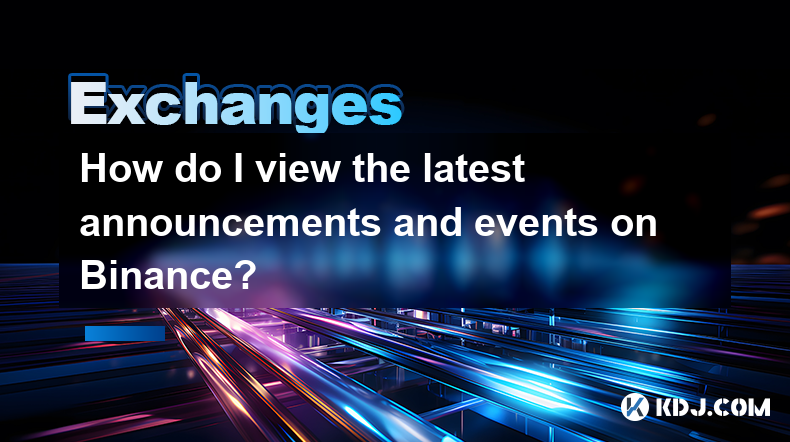
How do I view the latest announcements and events on Binance?
Mar 18,2025 at 10:18pm
Key Points:Binance utilizes multiple channels for disseminating announcements and events.The official Binance website is the primary source.Binance's social media platforms offer timely updates.Email subscriptions keep users informed about relevant announcements.Third-party aggregators can supplement official channels but require caution.How Do I View t...

How do I set up a subaccount on Binance?
Mar 14,2025 at 01:50pm
Key Points:Binance does not offer traditional "subaccounts" in the sense of separate accounts with independent logins under a master account.Instead, Binance offers features like user-defined labels for better portfolio management and API keys for automated trading. These provide functionality similar to subaccounts.Setting up these features involves na...
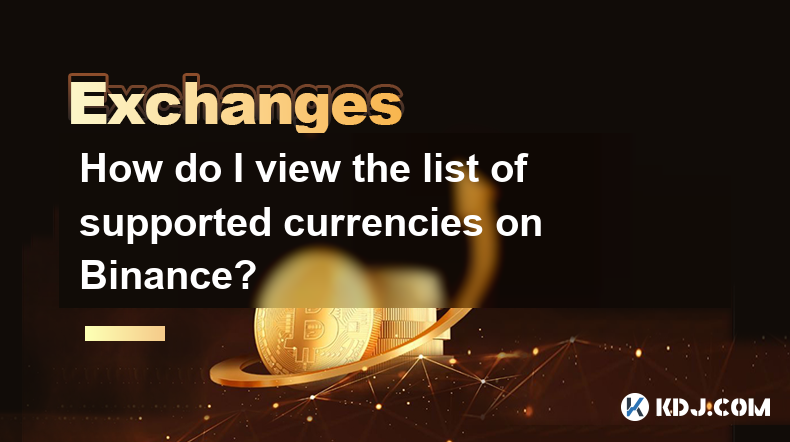
How do I view the list of supported currencies on Binance?
Mar 15,2025 at 05:35am
Key Points:Binance supports a vast and frequently updated list of cryptocurrencies. There's no single, static list.Finding supported currencies requires navigating Binance's website or app interfaces.Different sections of the exchange show different subsets of supported currencies (e.g., trading, staking, etc.).The availability of specific cryptocurrenc...
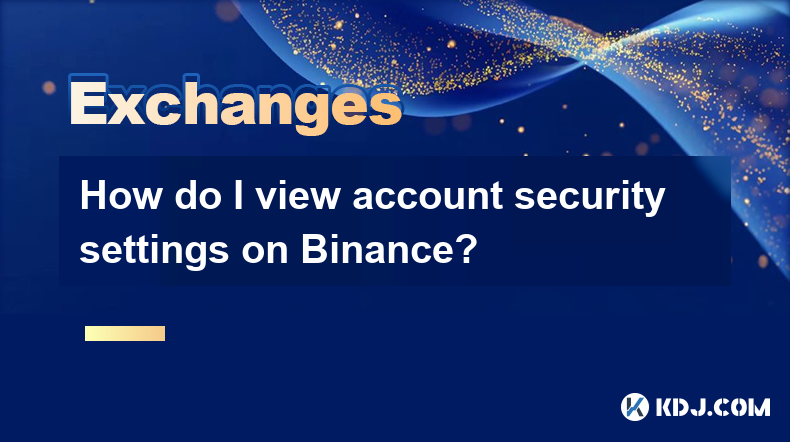
How do I view account security settings on Binance?
Mar 15,2025 at 08:40pm
Key Points:Binance's security settings are spread across multiple sections of your account. This article will guide you through each crucial area.Understanding and implementing these settings is paramount to protecting your cryptocurrency assets.We'll cover two-factor authentication (2FA), withdrawal whitelists, and other essential security features.Reg...
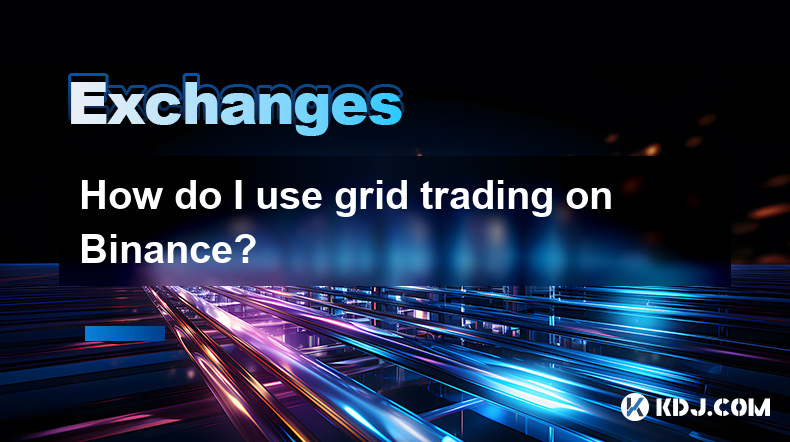
How do I use grid trading on Binance?
Mar 14,2025 at 04:25pm
Key Points:Grid trading on Binance involves automatically buying low and selling high within a defined price range.Binance offers a built-in grid trading bot, simplifying the process.Setting up a grid bot requires defining parameters like price range, grid quantity, and investment amount.Risk management is crucial, as losses are possible despite the aut...

How do I contact customer service on Binance to resolve issues?
Mar 16,2025 at 04:30am
Key Points:Binance's customer service is primarily self-service, relying heavily on its help center and FAQs.Direct contact methods are limited, with email support being the most common route for non-urgent issues.Urgent issues may require using the in-app support system, though response times can vary.Understanding Binance's support structure and utili...

How do I view the latest announcements and events on Binance?
Mar 18,2025 at 10:18pm
Key Points:Binance utilizes multiple channels for disseminating announcements and events.The official Binance website is the primary source.Binance's social media platforms offer timely updates.Email subscriptions keep users informed about relevant announcements.Third-party aggregators can supplement official channels but require caution.How Do I View t...

How do I set up a subaccount on Binance?
Mar 14,2025 at 01:50pm
Key Points:Binance does not offer traditional "subaccounts" in the sense of separate accounts with independent logins under a master account.Instead, Binance offers features like user-defined labels for better portfolio management and API keys for automated trading. These provide functionality similar to subaccounts.Setting up these features involves na...

How do I view the list of supported currencies on Binance?
Mar 15,2025 at 05:35am
Key Points:Binance supports a vast and frequently updated list of cryptocurrencies. There's no single, static list.Finding supported currencies requires navigating Binance's website or app interfaces.Different sections of the exchange show different subsets of supported currencies (e.g., trading, staking, etc.).The availability of specific cryptocurrenc...

How do I view account security settings on Binance?
Mar 15,2025 at 08:40pm
Key Points:Binance's security settings are spread across multiple sections of your account. This article will guide you through each crucial area.Understanding and implementing these settings is paramount to protecting your cryptocurrency assets.We'll cover two-factor authentication (2FA), withdrawal whitelists, and other essential security features.Reg...

How do I use grid trading on Binance?
Mar 14,2025 at 04:25pm
Key Points:Grid trading on Binance involves automatically buying low and selling high within a defined price range.Binance offers a built-in grid trading bot, simplifying the process.Setting up a grid bot requires defining parameters like price range, grid quantity, and investment amount.Risk management is crucial, as losses are possible despite the aut...
See all articles























































































